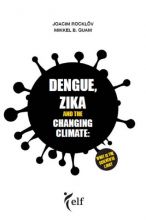The World Health Organization (WHO) has identified dengue as the globe’s most important viral disease carried by mosquitos and declared in February 2016 the ongoing pandemic of Zika as a Public Health Emergency of International Concern (PHEIC). Although the viruses have been known to scientists for quite some time, incidence of both Zika and dengue are currently increasing at alarming rates and poses an emerging threat to human health throughout the globe. Risk for both dengue and Zika has been generally limited to areas of the tropics, where climatic conditions are most conducive for the insects to thrive and reproduce. However, scientific evidence suggests that changing climate could shift the diseases’ geographical extent and intensity. The aim of this study has been to briefly describe the scientific linkage between climate change and shifting patterns in dengue and Zika infections. Focus is put on anticipated future transmission dynamics of dengue and Zika, and related policy implications. This report was written by scientists in the field of environmental epidemiology, who actively study the impact of climate change on human health around the world. The authors’ academic research has in recent years been devoted to understanding the role of weather, climate, and climate change in the occurrence of dengue, Zika, and other vector-borne diseases in both temperate and tropical areas throughout the globe.
Published by the European Liberal Forum with the support of Fores.
